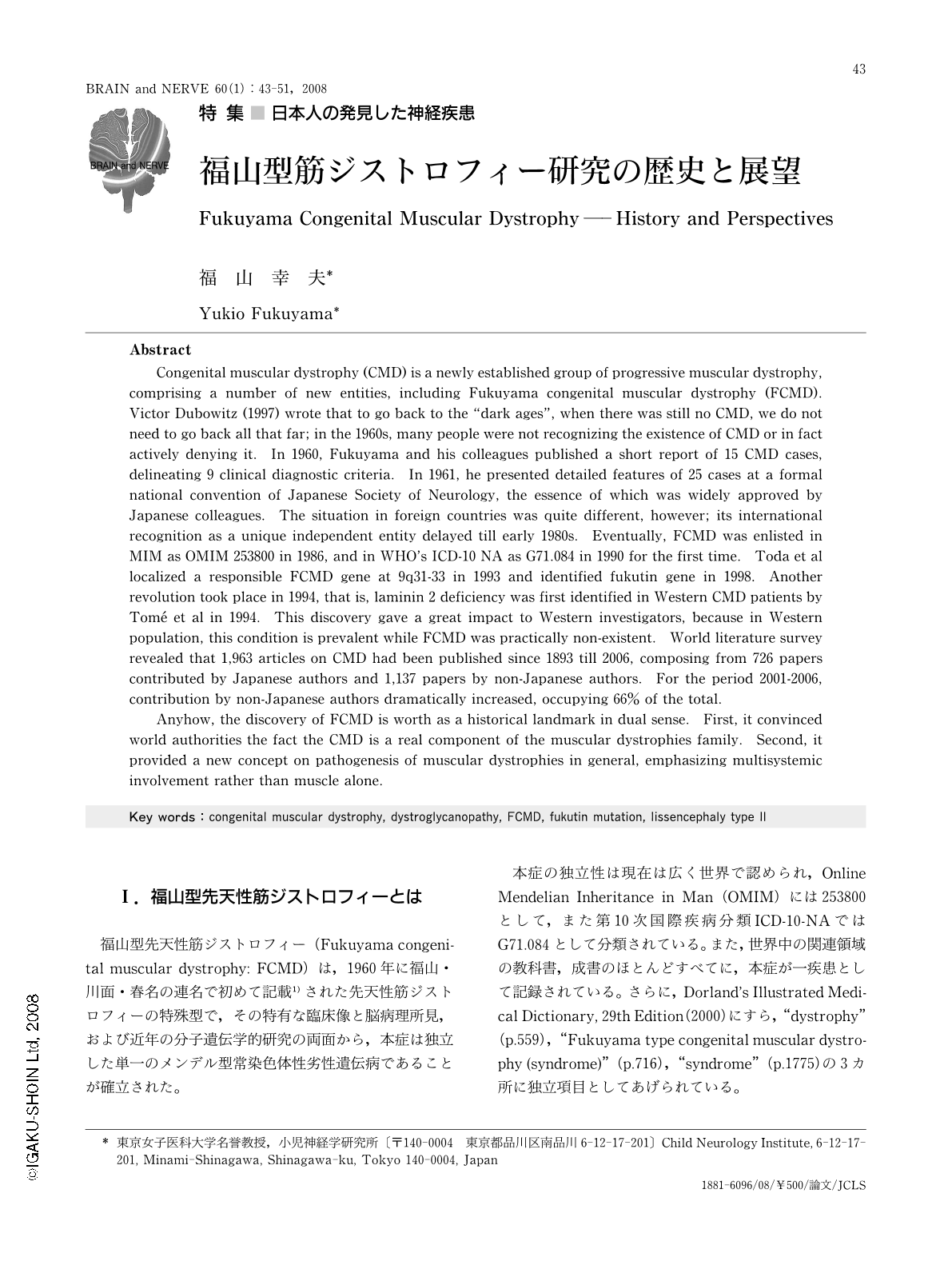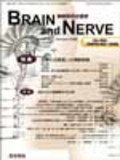Japanese
English
- 有料閲覧
- Abstract 文献概要
- 1ページ目 Look Inside
- 参考文献 Reference
Ⅰ.福山型先天性筋ジストロフィーとは
福山型先天性筋ジストロフィー(Fukuyama congenital muscular dystrophy: FCMD)は,1960年に福山・川面・春名の連名で初めて記載1)された先天性筋ジストロフィーの特殊型で,その特有な臨床像と脳病理所見,および近年の分子遺伝学的研究の両面から,本症は独立した単一のメンデル型常染色体性劣性遺伝病であることが確立された。
本症の独立性は現在は広く世界で認められ,Online Mendelian Inheritance in Man(OMIM)には253800として,また第10次国際疾病分類ICD-10-NAではG71.084として分類されている。また,世界中の関連領域の教科書,成書のほとんどすべてに,本症が一疾患として記録されている。さらに,Dorland's Illustrated Medical Dictionary, 29th Edition(2000)にすら,“dystrophy”(p.559),“Fukuyama type congenital muscular dystrophy (syndrome)”(p.716),“syndrome”(p.1775)の3カ所に独立項目としてあげられている。
Abstract
Congenital muscular dystrophy (CMD) is a newly established group of progressive muscular dystrophy, comprising a number of new entities, including Fukuyama congenital muscular dystrophy (FCMD). Victor Dubowitz (1997) wrote that to go back to the “dark ages”, when there was still no CMD, we do not need to go back all that far; in the 1960s, many people were not recognizing the existence of CMD or in fact actively denying it. In 1960, Fukuyama and his colleagues published a short report of 15 CMD cases, delineating 9 clinical diagnostic criteria. In 1961, he presented detailed features of 25 cases at a formal national convention of Japanese Society of Neurology, the essence of which was widely approved by Japanese colleagues. The situation in foreign countries was quite different, however; its international recognition as a unique independent entity delayed till early 1980s. Eventually, FCMD was enlisted in MIM as OMIM 253800 in 1986, and in WHO's ICD-10 NA as G71.084 in 1990 for the first time. Toda et al localized a responsible FCMD gene at 9q31-33 in 1993 and identified fukutin gene in 1998. Another revolution took place in 1994, that is, laminin 2 deficiency was first identified in Western CMD patients by Tome et al in 1994. This discovery gave a great impact to Western investigators, because in Western population, this condition is prevalent while FCMD was practically non-existent. World literature survey revealed that 1,963 articles on CMD had been published since 1893 till 2006, composing from 726 papers contributed by Japanese authors and 1,137 papers by non-Japanese authors. For the period 2001-2006, contribution by non-Japanese authors dramatically increased, occupying 66% of the total.
Anyhow, the discovery of FCMD is worth as a historical landmark in dual sense. First, it convinced world authorities the fact the CMD is a real component of the muscular dystrophies family. Second, it provided a new concept on pathogenesis of muscular dystrophies in general, emphasizing multisystemic involvement rather than muscle alone.

Copyright © 2008, Igaku-Shoin Ltd. All rights reserved.


